||AZ || RU || EN ||
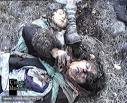 |
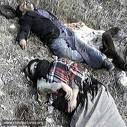 |
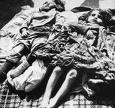 |
 |
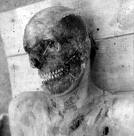 |
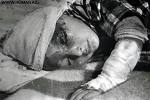 |
 |
 |
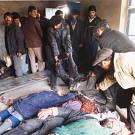 |
 |
 |
 |
Khojaly Massacre
The Khojaly Massacre was the killing of hundreds of ethnic Azerbaijani civilians from the town of Khojaly on 25-26 February 1992 during the Nagorno-Karabakh War. The town itself was levelled to the ground. According to the Azerbaijani side, as well as Memorial Human Rights Center, Human Rights Watch and other international observers,[1][2] the massacre was committed by the ethnic Armenian armed forces, reportedly with help of the Russian 366th Motor Rifle Regiment, apparently not acting on orders from the command.[3][4] The official death toll provided by Azerbaijani authorities is 613 civilians, of them 106 women and 83 children.[5] The event became the largest massacre in the course of conflict.[6]
Background
Main article: Nagorno-Karabakh war
In 1988 the town had about 2,000 inhabitants. Due to the Nagorno-Karabakh war and the population exchanges between Armenia and Azerbaijan as well as Meskhetian Turk refugees leaving Central Asia and subsequently settling in the town, this grew to 6,000 by 1991. The town of Khojaly was located on the road that connected Stepanakert(Shusha) and Agdam and had the region's only airport. According to reports from Human Rights Watch, Khojaly was used as a base for Azerbaijani forces shelling the city of Stepanakert, and in turn was shelled by Armenian forces.[7] During the Nagorno-Karabakh conflict, both Armenians and Azerbaijanis became victims of pogroms and ethnic cleansing, which resulted in numerous casualties and displacement of large groups of people.[8] In October 1991, the Nagorno Karabakh forces cut the road connecting Khojaly and Aghdam, so that the only way to reach the town was by a helicopter. The town was defended by local OMON forces under the command of Alif Hajiev, which numbered about 160 or so lightly armed men.[8] Prior to the attack, the town had been without electricity and gas for several months.[9]
The massacre
According to Human Rights Watch, the tragedy struck when ōa large column of residents, accompanied by a few dozen retreating fighters, fled the city as it fell to Armenian forces. As they approached the border with Azerbaijan, they came across an Armenian military post and were cruelly fired uponö.[10] The Armenian side states that the killings occurred as a result of wartime military operations, and were in part caused by the prevention of the evacuation of town inhabitants by Azerbaijani forces. Armenian government officials asserted that the casualty count, though high, was due to the fact the fleeing civilians in Khojaly had mingled with the retreating defenders and when the Azeri troops shot back, Armenian forces fired upon them, killing both soldier and civilian alike. Helsinki Watch itself concluded "that the militia, still in uniform, and some still carrying their guns, were interspersed with the masses of civilians." [11] However, Human Rights Watch and Memorial, found this explanation of Armenian officials unconvincing, stating that the mass killing of civilians could not be justified under any circumstances. Human Rights Watch noted that ōthe attacking party [i.e., Karabakh Armenian forces] is still obliged to take precautionary measures to avoid or minimize civilian casualties. In particular, the party must suspend an attack if it becomes apparent that the attack may be expected to cause civilian casualties that are excessive in relation to the concrete and direct military advantage anticipated."[12] The Armenian side refers to Ayaz Mutalibov's interview to claim that the massacre had been committed not by Armenian soldiers but by Azerbaijan Popular Front militants who allegedly shot their own civilians escaping through the corridor.[citation needed] In one of his interviews Mutalibov stated that the event could be a ploy by opposition to denigrate his government.[citation needed] In later interviews, however, Mutalibov would go on to condemn the Armenians for what he said was a blatant misinterpretation of his words.[13] Other theories proposed by the Armenian side were that Azeri Popular Front soldiers had massacred 100 Azeri and Armenian civilians and then proceeded to mix the bodies and lay blame upon the Armenians.[14] This explanation however is widely disputed, among others, the executive director of Human Rights Watch has stated that: ōwe place direct responsibility for the civilian deaths with Karabakh Armenian forces. Indeed, neither our report nor that of Memorial includes any evidence to support the argument that Azerbaijani forces obstructed the flight of, or fired on Azeri civiliansö.[12] At the same time, some Armenian sources admitted the guilt of the Armenian side. According to Markar Melkonian, the brother of the Armenian military leader Monte Melkonian, "Khojaly had been a strategic goal, but it had also been an act of revenge." The date of the massacre in Khojaly had a special significance: it was the run-up to the fourth anniversary of the anti-Armenian pogrom in the city of Sumgait. Melkonian particularly mentions the role of the fighters of two Armenian military detachments called the Arabo and Aramo, who stabbed to death many Azeri civilians.[15] According to Serge Sarkisian, long-time Defense Minister and Chairman of Security Council of Armenia who is the current president of Armenia, ōA lot was exaggeratedö in the casualties, and the fleeing Azerbaijanis had put up armed resistance. At the same time he stated: ōBefore Khojali, the Azerbaijanis thought that they were joking with us, they thought that the Armenians were people who could not raise their hand against the civilian population. We were able to break that [stereotype]. And that's what happened. And we should also take into account that amongst those boys were people who had fled from Baku and Sumgait".[8]
The role of 366th regiment of CIS army
According to international observers, soldiers and officers of 366th regiment took part in the attack on Khojaly.[16] Memorial called for investigation of the facts of participation of CIS soldiers in the military operations in the region and transfer of military equipment to the sides of the conflict. Soon after the massacre, in early March 1992, the regiment was withdrawn from Nagorno-Karabakh. Paratroopers evacuated the personnel of the regiment by helicopter, but over 100 soldiers and officers remained in Stepanakert and joined the Armenian forces, including the commander of the 2nd battalion major Seyran Ohanyan,[17] who currently serves as a Minister of Defense of Armenia. Krasnaya Zvezda newspaper reported that: despite categorical orders of the command of the military district, some military personnel of the 366th regiment took part in military operations near Khodjaly on Karabakhi side on the 20s of February. At least two such instances were recorded. And during evacuation of the military personnel of the regiment paratroopers selectively searched several servicemen and found large amounts of money on them, including foreign currency.[18]
International reaction
The Khojaly Massacre was described by Human Rights Watch as "the largest massacre to date in the conflict" over Nagorno-Karabakh.[19] Memorial, the Moscow-based human rights group, stated in their report that the mass killing of civilians in Khojaly could not be justified under any circumstances and that actions of Armenian militants were in gross violation of a number of basic international human rights conventions.[20] Estimating the number of the civilians killed in the massacre, Human Rights Watch stated that "there are no exact figures for the number of Azeri civilians killed because Karabakh Armenian forces gained control of the area after the massacre". A 1993 report by Human Rights Watch put the number of deaths at least 161 [10], although later reports state the number of deaths as at least 200. According to Human Rights Watch, "while it is widely accepted that 200 Azeris were murdered, as many as 500-1,000 may have died". [21] In Written Declaration No. 324, 30 members of the PACE, including members from Azerbaijan, Albania, Luxembourg, Poland, Bulgaria, Norway, United Kingdom and Turkey, stated that "On 26 February 1992, Armenians massacred the whole population of Khojaly and fully destroyed the city", and called on all members of the Parliamentary Assembly "to recognize the genocide perpetrated by the Armenians against the Azeri population from the beginning of the 19th Century". [22] On February 24, 2009 the California State Assembly member Felipe Fuentes in a letter to President Ilham Aliyev offered condolences to Azerbaijan.[23]
Remembrance
The massacre is also referred to as the Khojaly Genocide (Azerbaijani: Xocalı soyqırımı) and the Khojaly Tragedy (Azerbaijani: Xocalı faciəsi) by the government of Azerbaijan. [24]. Armenian government sources use the terms Battle of Khojaly or the Khojaly event. Western governments and the western media refer to it as the Khojaly Massacre.
Memorials
There are currently only one memorial in Hague, Netherlands and to be built in Ankara, Turkey, commemorating the Khojaly Massacre.[25][26] Another memorial will be constructed in Budapest, Hungary.[
seyranaliyev@mail.ru
ąśčüą┐ąŠą╗čīąĘčāčÄčéčüčÅ č鹥čģąĮąŠą╗ąŠą│ąĖąĖ uCoz

